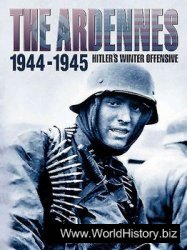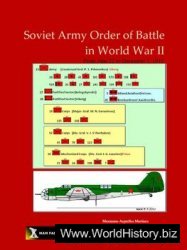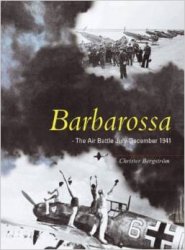Metal products formed a signifi cant share of the goods handled by European merchants,
who bought and sold many other types of merchandise as well. Their most
important commodities were raw wool and fi nished cloth. Merchants from Venice and
Genoa traded silk, velvets, and fi ne woolens produced in northern Italy eastward to
Constantinople and westward and northward to wealthy nobles in Spain, France, and
Germany. During the sixteenth century, they were joined, and sometimes supplanted,
by Dutch, English, and French merchants handling what were called “new draperies”:
cheaper, lighter cloth made of wool, cotton, linen, or blends.
Responding to – and creating – changes in fashion, merchants added new types of
textile products to the cloth they traded. Knitting had been introduced into Europe
from the Islamic world through Spain in about the thirteenth century, and knitted
hose and stockings, of both silk and wool, gradually replaced bias-cut woven stockings
among the upper classes. Knitted materials cling to the body and stretch more easily
than woven ones, making them more practical and fl attering. With the introduction
of knitted stockings, men’s jackets and doublets became shorter and shorter, showing
off a greater expanse of often brightly colored leg. They grew so short that fashionable
men began wearing elaborate “cod-pieces” to cover their private parts, often stuffed
and decorated with bows and embroidery.
Stocking knitting became a common occupation for the poor in many parts of Europe,
as it required almost no capital investment; knitters used yarn from their own
sheep or yarn supplied by merchants, who then paid the knitters for their labor and
sold the stockings both regionally and internationally. The knitting of stockings was
speeded up with the introduction of the knitting frame – in which double-pointed
needles are arranged on a stand, and the knitter works around the needles – and in
some towns guilds of stocking-knitters formed to control production, modeled on
the craft guilds in other products. As in other guilds, master stocking-knitters were
predominantly male, as were the merchants who organized stocking-knitting in rural
areas where no guilds developed. Pressure from merchants, the relative availability of
the raw materials, and the simplicity of the equipment prevented the establishment
of strong guilds of stocking-knitters in most parts of Europe, however, and knitting
remained a “free art,” open to anyone in terms of both production and trade.
Lace-making also remained a “free art,” and lace became a major commodity for
merchants in the southern and northern Netherlands. Here urban craft guilds had
lost much of their power in the religious wars of the 1560s–1580s, when Antwerp and
other cities and towns were besieged and sometimes destroyed; after the wars, city governments
were dominated by merchant-entrepreneurs. These merchants hired urban
residents as well as villagers to make ribbons, trimmings, and even cloth as well as lace,
lowering their costs by subdividing and simplifying the steps of production so they
could hire less-skilled workers at lower wages.
In the Ottoman Empire, Italy, and southern France, merchants expanded silk production,
growing the mulberry trees that silkworms eat and hiring large numbers
of young women to unwind cocoons, spin silk thread, and weave. Turkish and Italian
silk was never quite as good as Chinese, but it was much cheaper, and wealthy
people throughout Europe could afford luxurious fabrics made of silk such as velvets,
brocades, and satins. Clothing styles in the sixteenth century often included many
layers of fancy silk, with slashes cut in the top layers so that the bright colors of the
layers underneath showed through. Silk was so profi table that investors even tried to
develop silk production in England and Germany, but the winters were too harsh for
silkworms.
Particularly in the northern Netherlands, which became the Dutch Republic, new
technology enhanced organizational changes to increase production. The “Dutch” ribbon
loom, for example, allowed a single worker to weave up to twenty-four ribbons at
a time. Wind power was tapped to full cloth, and fulling mills similar to the one that
startled Don Quixote were built in many parts of the Dutch countryside. Because the
Netherlands is so fl at, falling water was not a common power option, but the Dutch
adapted technology developed for watermills to wind power, using windmills to grind
grain, crush seeds for oil, saw wood, and for many other uses. These technological
innovations required large amounts of capital, much of which was provided by the
partnerships and companies that had originally been established to share the risk in
trading ventures.
The Dutch combined new technology, a simplifi cation of production processes,
and a sharper division of labor in ship-building and textile production. In the early
sixteenth century, Dutch shipyards were producing many types of ships, from small
fi shing yawls to huge galleons, supplying a merchant fl eet that at its height in the seventeenth
century may have numbered over 15,000 ships. Toward the end of the century
Dutch ship-builders invented the fl uyt , or fl y-boat, a long, fl at-bottomed ship made
of pine or fi r, soft woods that could be cut by wind-driven sawmills. Because there
was little piracy in the North and Baltic Seas where the Dutch primarily traded, fl uyts
carried no guns, but could be crammed with bulky cargos such as grain, fi sh, lumber,
wine, and metals. Fluyts were mass-produced quickly and cheaply in the area just north
of Amsterdam, a district called the Zaanstreek. Because they were rigged simply, they
needed only half the crew of other ships for the same amount of cargo, making them
much cheaper to operate as well as produce.
Dutch ships brought raw materials from all over Europe and later from around the
world to the Netherlands, where merchants invested in “traffi cs” ( trafi eken in Dutch),
fi rms that specialized in processing and refi ning products for reexport. Raw sugar was
refi ned into white table sugar and raw diamonds cut into gems in Amsterdam, gin
distilled in Schiedam, tobacco cut in Rotterdam, whale blubber boiled into whale oil
in the Zaanstreek, clay made into ceramics at Delft, and paper, leathergoods, and glass
produced in many Dutch towns. These products were shipped internationally, and also
sold locally to prosperous farmers and city residents over the canals and rivers that
crisscrossed the Dutch countryside .




 World History
World History









